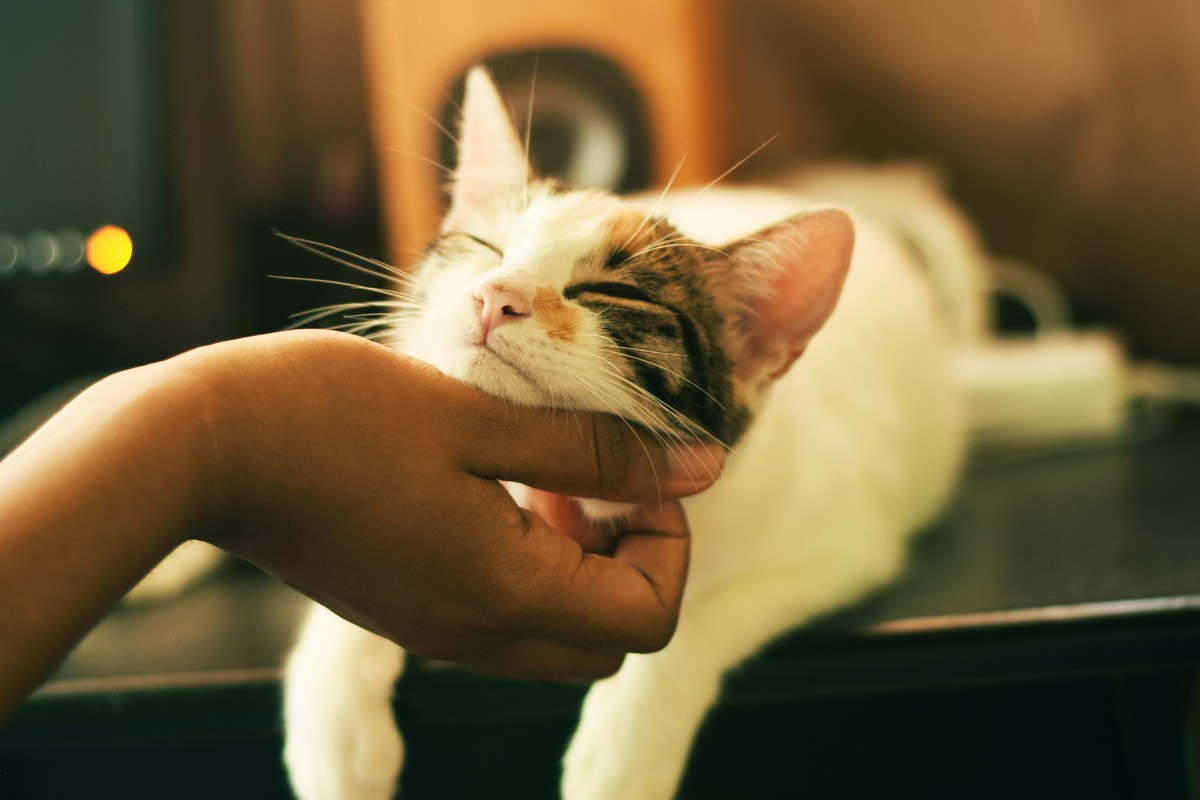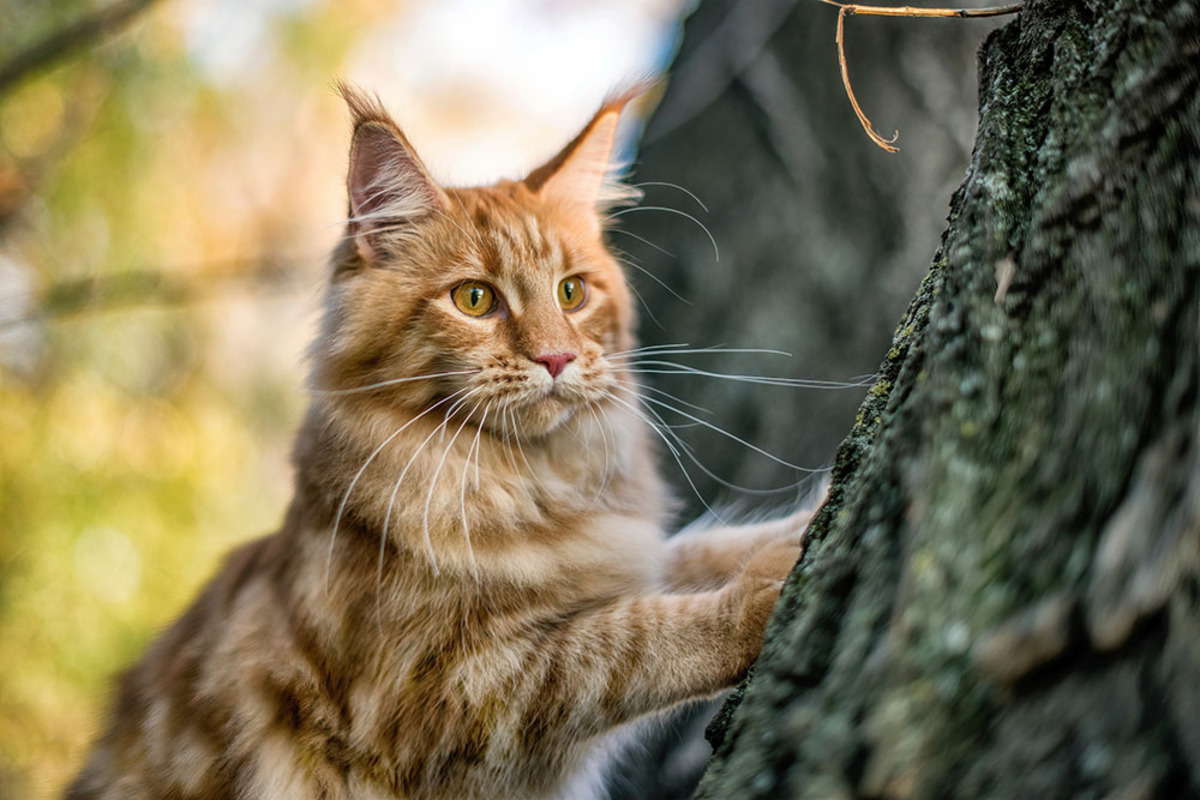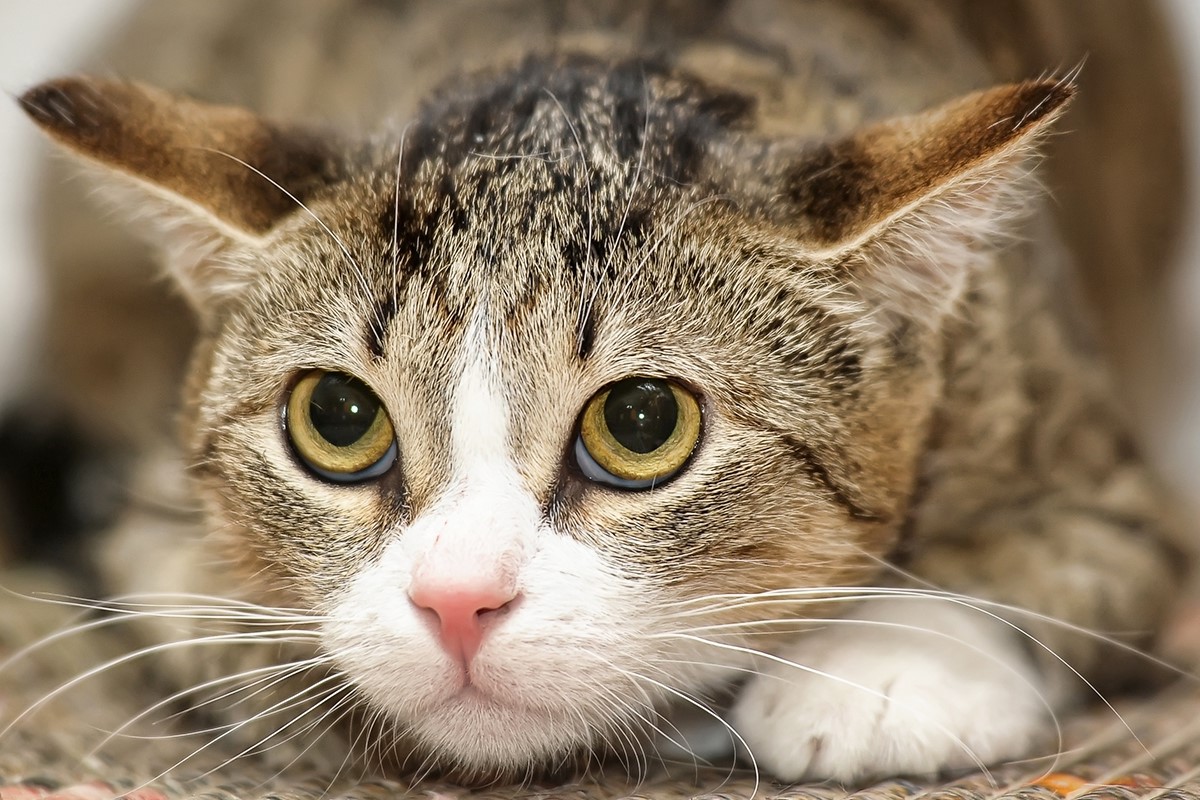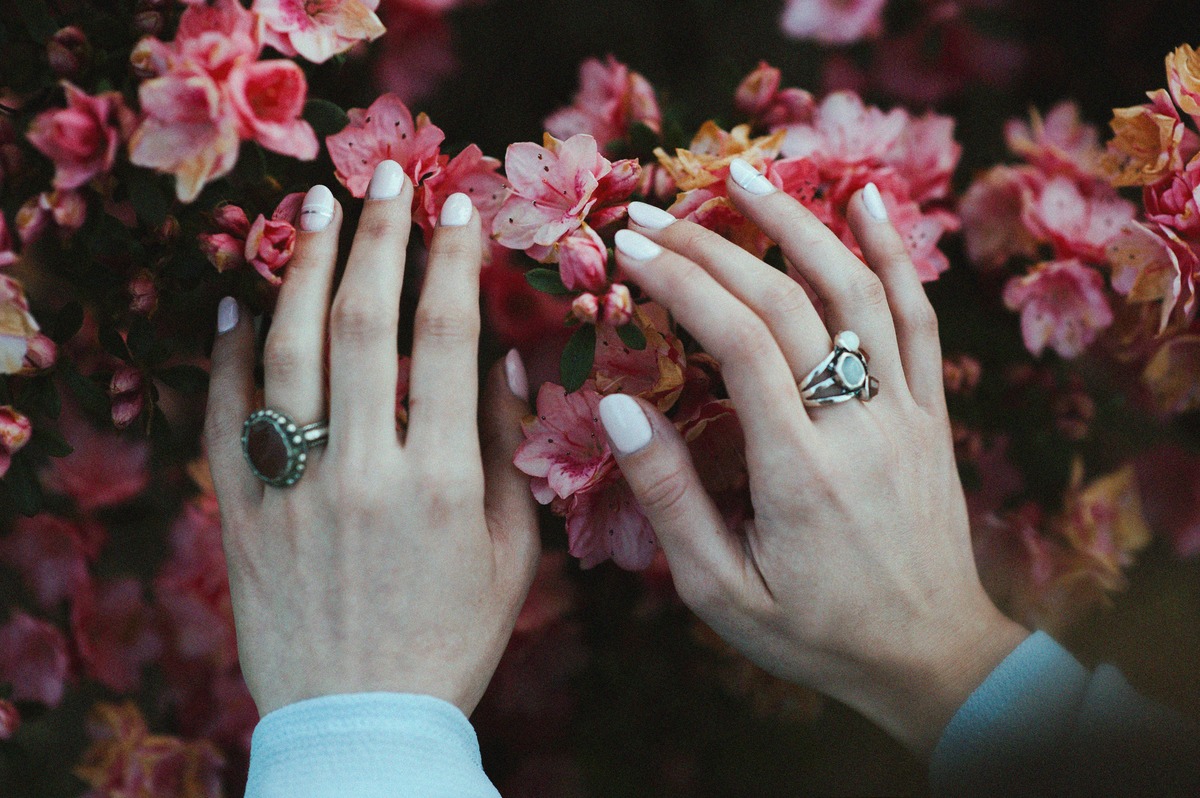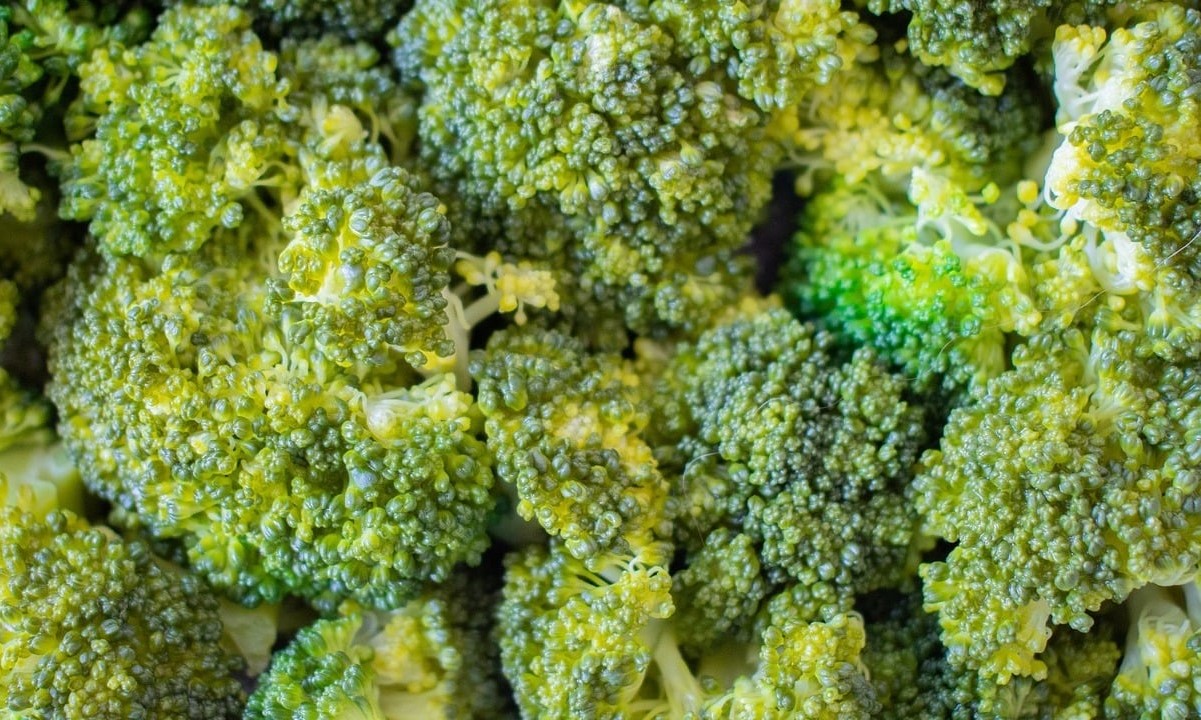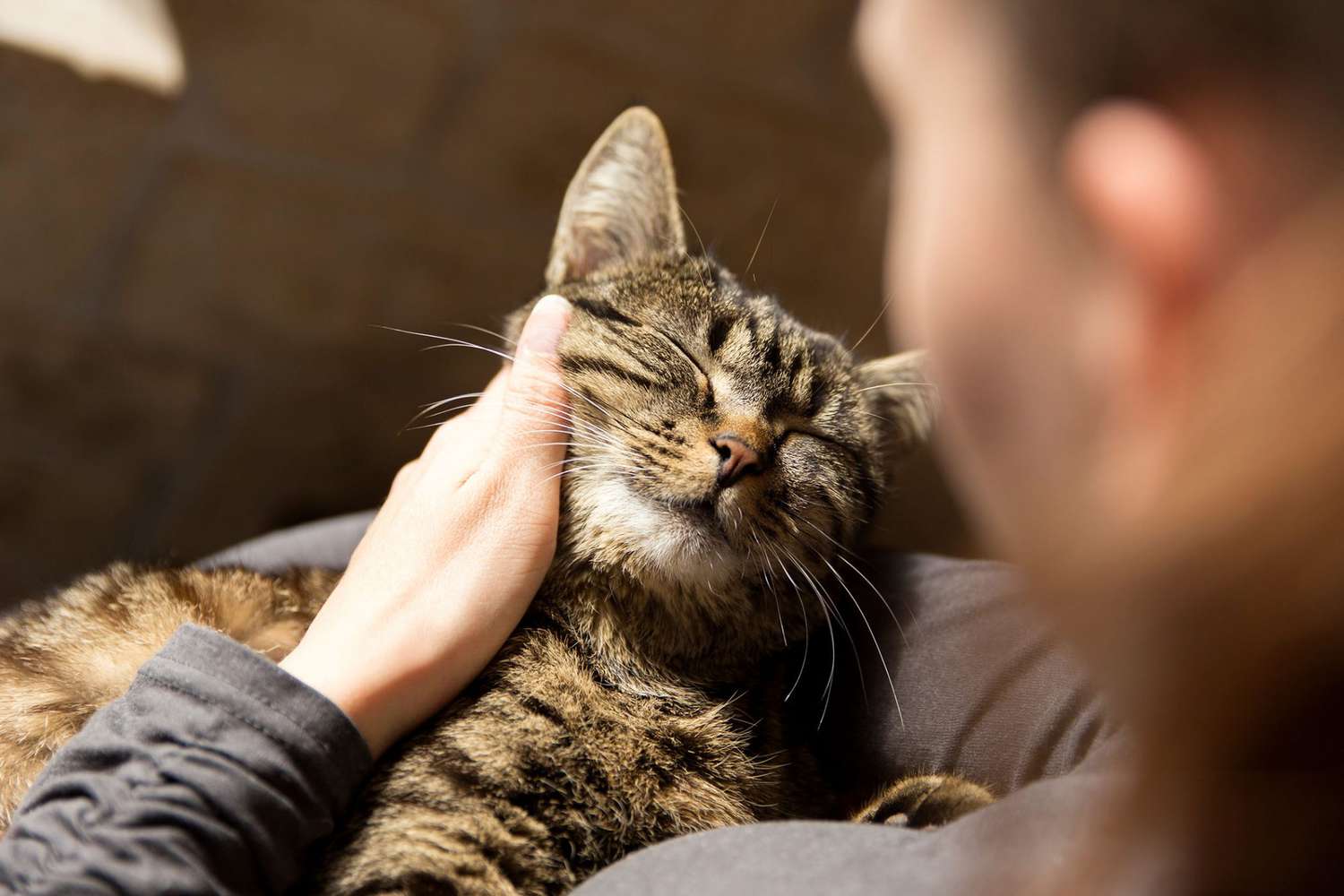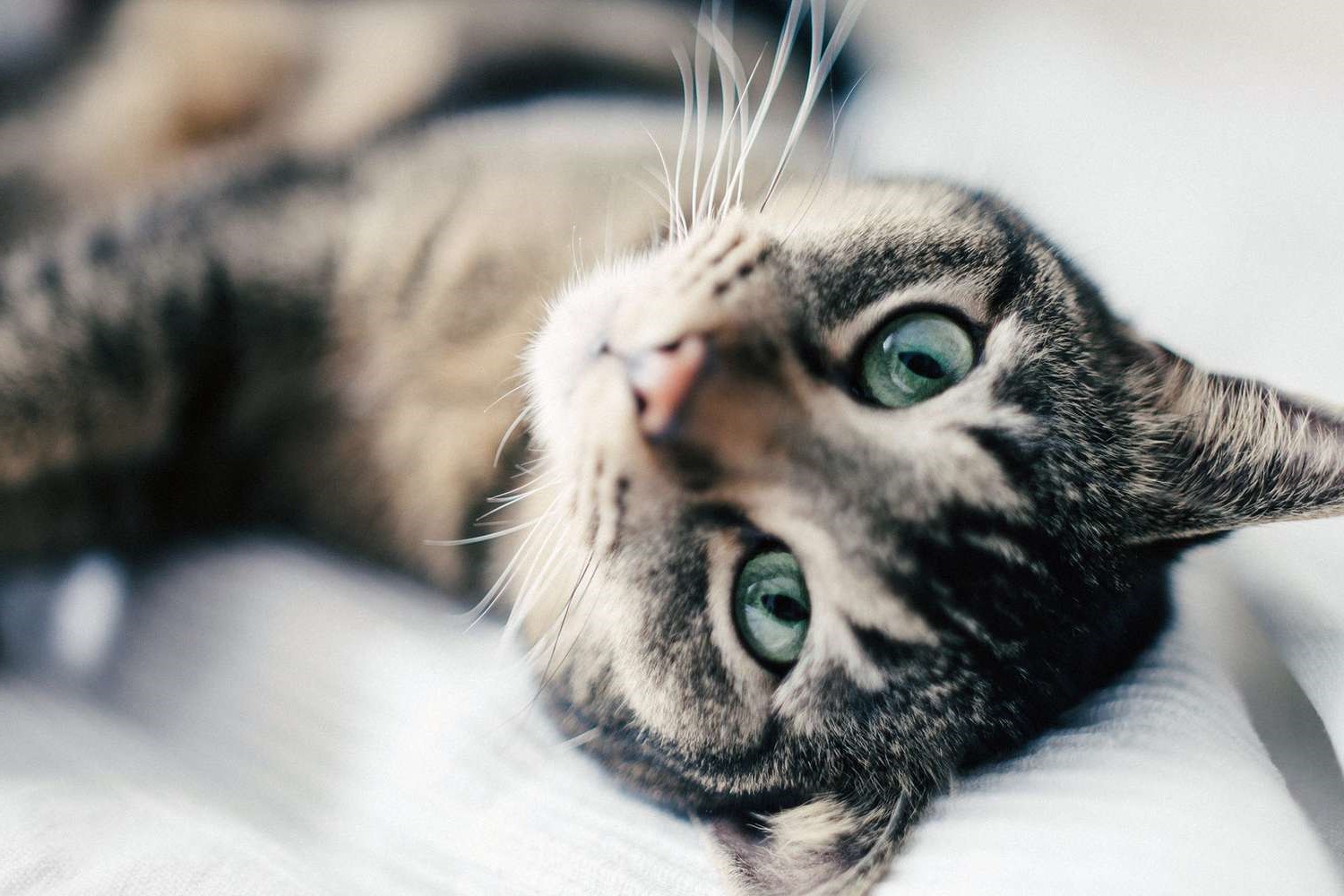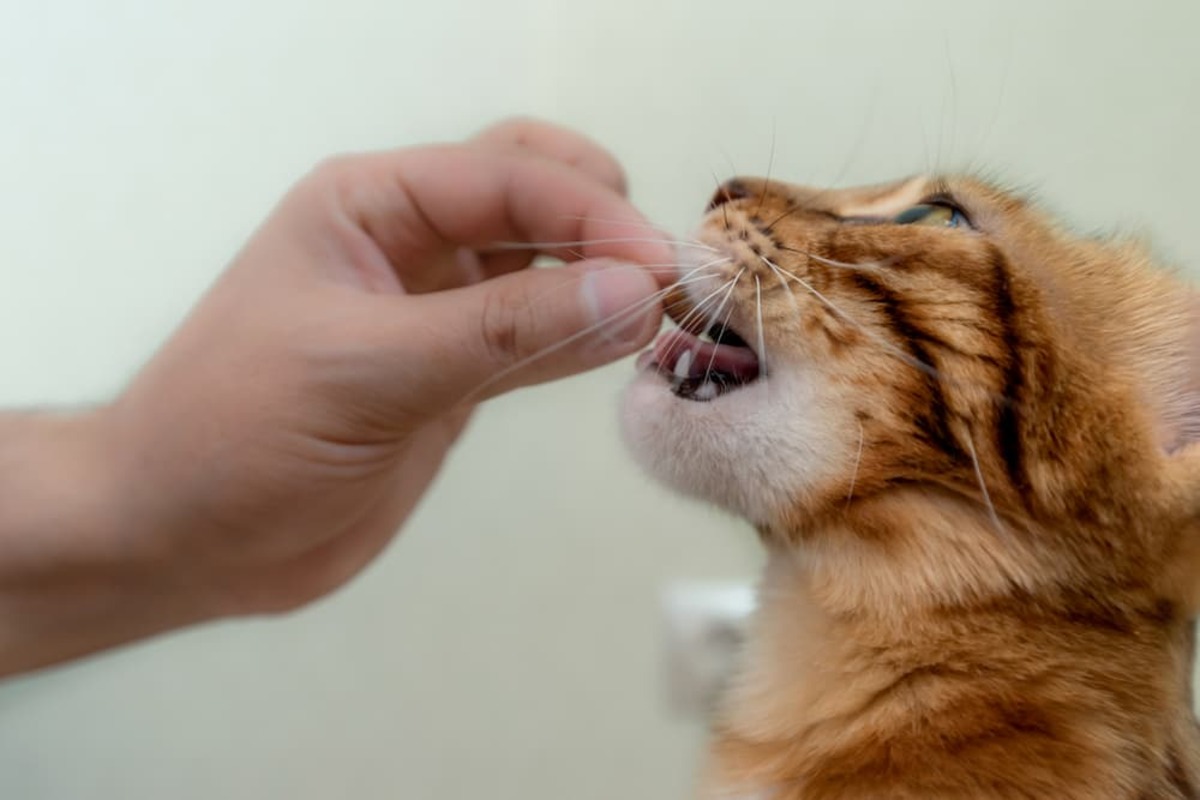Home>Lifestyle>10 Beautiful Houseplants That Are Safe For Cats
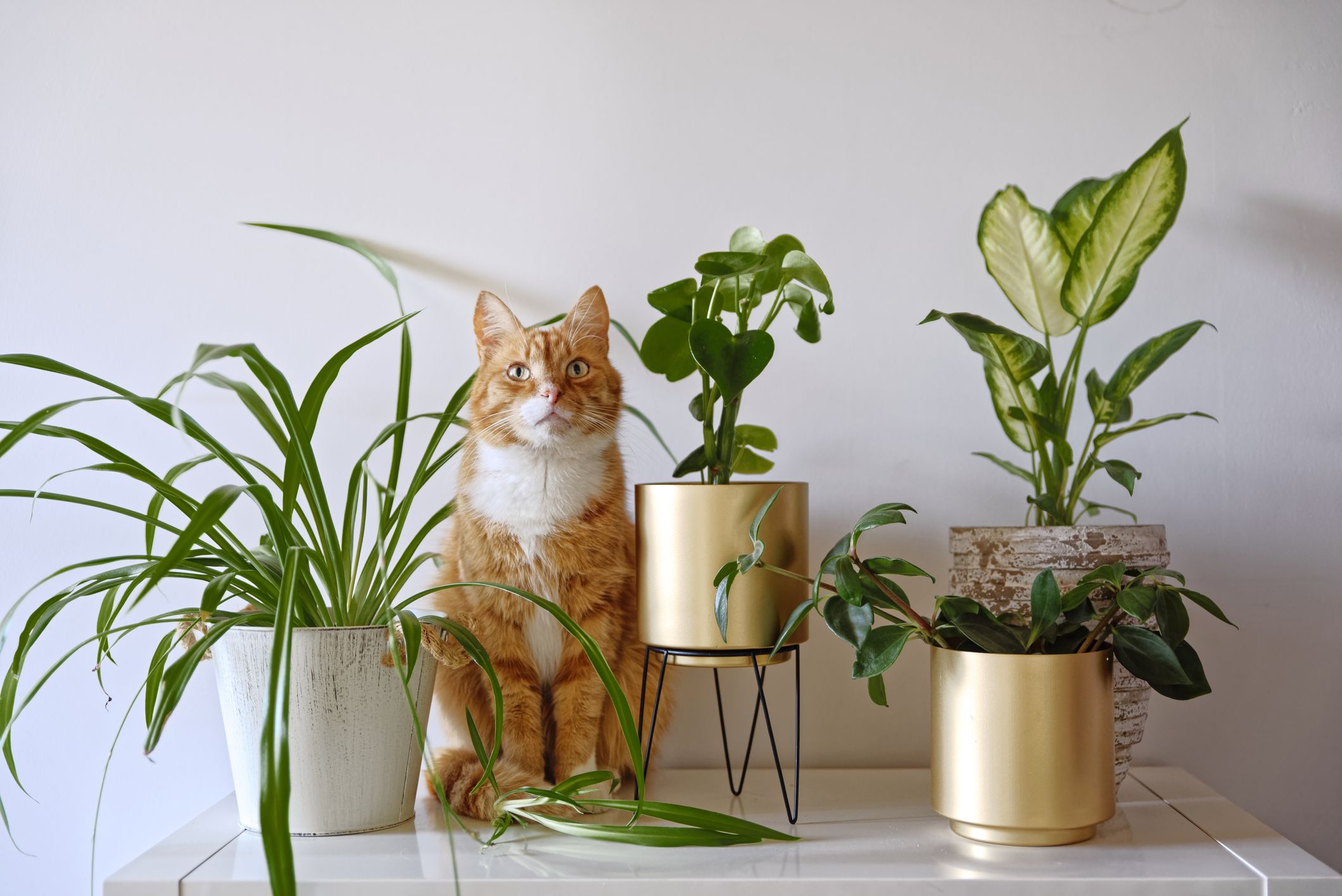

Lifestyle
10 Beautiful Houseplants That Are Safe For Cats
Published: February 3, 2024
Discover 10 cat-friendly houseplants to enhance your lifestyle. Explore safe and beautiful options for your home.
(Many of the links in this article redirect to a specific reviewed product. Your purchase of these products through affiliate links helps to generate commission for Noodls.com, at no extra cost. Learn more)
Table of Contents
Introduction
Houseplants not only add a touch of greenery and beauty to our living spaces but also contribute to a healthier and more vibrant environment. For many individuals, the presence of indoor plants brings a sense of tranquility and connection with nature. However, for cat owners, the quest for the perfect houseplants comes with an additional consideration – ensuring that the plants are safe for their feline companions.
The curiosity of cats often leads them to explore their surroundings, including nibbling on plants. As such, it is crucial for cat owners to choose houseplants that are non-toxic to cats, providing a safe and harmonious living environment for both the plants and their beloved pets.
In this article, we will explore a selection of 10 beautiful houseplants that are not only visually appealing but also safe for cats. From the graceful Spider Plant to the vibrant Polka Dot Plant, each of these green companions offers a delightful addition to any cat-friendly home. Let's delve into the world of safe and stunning houseplants that will bring joy to both you and your feline friends.
Read more: 10 Unique Names For Your Black And White Cat
Spider Plant
The Spider Plant, scientifically known as Chlorophytum comosum, is a popular choice for both novice and seasoned plant enthusiasts. This resilient and visually captivating plant is characterized by its arching leaves, which cascade gracefully, resembling spider legs. Its lush green foliage, adorned with white stripes, adds a touch of elegance to any living space.
One of the most appealing aspects of the Spider Plant is its air-purifying properties. It is known to effectively remove harmful toxins, such as formaldehyde and xylene, from the air, contributing to a cleaner and healthier indoor environment. This makes it an ideal choice for homes with cats, as it promotes a safe and nurturing atmosphere for both the plants and the pets.
In addition to its air-purifying abilities, the Spider Plant is remarkably low-maintenance, making it an excellent option for busy cat owners. It thrives in moderate to bright indirect light and can adapt to various conditions, making it suitable for different areas within a home. Furthermore, it is forgiving when it comes to watering, as it can tolerate occasional dry spells, making it a resilient and forgiving plant for those who may not have a green thumb.
The Spider Plant's versatility extends beyond its air-purifying and low-maintenance qualities. It also reproduces prolifically, producing offshoots known as "spiderettes" that dangle from the mother plant, adding a charming aesthetic to its overall appeal. These spiderettes can be propagated easily, allowing cat owners to expand their collection of Spider Plants or share them with fellow plant enthusiasts.
When it comes to the safety of cats, the Spider Plant offers peace of mind to pet owners. It is listed as non-toxic to cats by the American Society for the Prevention of Cruelty to Animals (ASPCA), meaning that even if cats decide to nibble on its leaves, they are unlikely to experience any harmful effects.
In summary, the Spider Plant is a delightful addition to any cat-friendly home. Its air-purifying properties, low-maintenance nature, and safety for cats make it a top choice for those seeking a beautiful and pet-friendly houseplant. With its graceful appearance and numerous benefits, the Spider Plant stands as a testament to the harmony that can exist between indoor plants and beloved feline companions.
Boston Fern
The Boston Fern, scientifically known as Nephrolepis exaltata 'Bostoniensis,' is a classic and beloved choice for indoor greenery. Renowned for its lush, feathery fronds that elegantly arch and cascade, the Boston Fern exudes timeless charm and natural beauty. This perennial favorite has earned its place as a staple in many households, offering a refreshing and enchanting presence within living spaces.
One of the most captivating features of the Boston Fern is its graceful foliage, which creates a sense of tranquility and freshness wherever it resides. The arching fronds, with their delicate texture and vibrant green hue, lend an air of sophistication to any room. Whether displayed in a hanging basket or placed atop a pedestal, the Boston Fern effortlessly infuses its surroundings with a touch of natural elegance.
In addition to its aesthetic appeal, the Boston Fern boasts air-purifying qualities that contribute to a healthier indoor environment. This plant is known for its ability to filter and humidify the air, effectively removing pollutants and increasing moisture levels. By doing so, it helps to create a more breathable and comfortable atmosphere, benefitting both inhabitants and their feline companions.
For cat owners, the safety of indoor plants is a paramount consideration. The Boston Fern offers peace of mind in this regard, as it is listed as non-toxic to cats by the ASPCA. This means that cat owners can adorn their living spaces with the Boston Fern, knowing that their curious feline friends can coexist safely with this enchanting plant.
Caring for a Boston Fern involves providing it with the appropriate conditions to thrive. This includes placing it in a location with indirect light and maintaining consistent moisture levels, as the fern thrives in a humid environment. Regular misting or placing the plant in a tray of pebbles and water can help to create the ideal humidity for its growth.
In summary, the Boston Fern stands as a timeless and safe option for cat-friendly homes. Its captivating beauty, air-purifying attributes, and non-toxic nature make it a cherished addition to any living space. With its ability to enhance indoor air quality and its compatibility with feline companions, the Boston Fern continues to be a beloved choice for those seeking a harmonious blend of natural elegance and pet-friendly living.
African Violet
The African Violet, scientifically known as Saintpaulia, is a beloved and charming flowering plant that has captured the hearts of plant enthusiasts and cat owners alike. Renowned for its delicate, velvety leaves and profusion of colorful blooms, the African Violet adds a touch of elegance and vibrancy to any indoor setting.
One of the most enchanting features of the African Violet is its stunning array of flowers, which come in a diverse spectrum of hues, including shades of purple, pink, blue, and white. These dainty blossoms, nestled amidst the plant's lush foliage, create a captivating display that brightens up living spaces and brings a sense of joy and serenity. Whether showcased in a decorative pot or a hanging basket, the African Violet's blooms are a delightful sight to behold, adding a pop of color to any room.
In addition to its visual appeal, the African Violet is revered for its ease of care, making it an ideal choice for cat owners seeking a low-maintenance yet stunning houseplant. This resilient plant thrives in indirect light and moderate temperatures, making it well-suited for indoor environments. With proper care, including regular watering and well-draining soil, the African Violet can flourish, rewarding its caretakers with an abundance of charming blooms.
For cat owners, the safety of indoor plants is a top priority. The African Violet offers reassurance in this aspect, as it is considered non-toxic to cats by the ASPCA. This designation provides peace of mind to pet owners, allowing them to adorn their homes with the beauty of African Violets without compromising the well-being of their feline companions.
Caring for an African Violet involves providing it with the right conditions for optimal growth and flowering. This includes ensuring that the plant receives adequate but indirect light, as direct sunlight can scorch its delicate leaves. Additionally, maintaining consistent moisture levels and avoiding water contact with the leaves can help prevent issues such as leaf spotting, allowing the African Violet to thrive and bloom abundantly.
In summary, the African Violet stands as a delightful and safe addition to cat-friendly homes. Its captivating blooms, low-maintenance care requirements, and non-toxic nature make it a cherished choice for those seeking a harmonious blend of beauty and pet-friendly living. With its ability to brighten up indoor spaces and its compatibility with feline companions, the African Violet continues to be a beloved favorite for plant enthusiasts and cat owners alike.
Areca Palm
The Areca Palm, scientifically known as Dypsis lutescens or Chrysalidocarpus lutescens, is a majestic and graceful palm species that has garnered widespread admiration as a beloved indoor plant. With its feathery fronds and elegant silhouette, the Areca Palm exudes a tropical allure, bringing a touch of lush greenery and tranquility to any living space.
One of the most striking features of the Areca Palm is its lush foliage, characterized by long, arching fronds that gracefully fan outwards, creating a canopy of verdant beauty. The delicate, feathery appearance of its leaves adds a sense of lightness and airiness to its overall presence, making it a captivating focal point within interiors. Whether placed in a decorative pot or a tall planter, the Areca Palm's verdant fronds infuse rooms with a sense of natural splendor, evoking a serene and tropical ambiance.
In addition to its visual appeal, the Areca Palm boasts air-purifying properties, contributing to a healthier indoor environment. This plant is known for its ability to remove harmful toxins such as formaldehyde, xylene, and toluene from the air, effectively enhancing air quality and promoting a refreshing atmosphere within homes. By purifying the air, the Areca Palm not only creates a more pleasant living environment for inhabitants but also contributes to the well-being of feline companions, making it a desirable choice for cat-friendly homes.
For cat owners, the safety of indoor plants is a crucial consideration. The Areca Palm provides peace of mind in this regard, as it is listed as non-toxic to cats by the American Society for the Prevention of Cruelty to Animals (ASPCA). This designation ensures that cat owners can adorn their living spaces with the lush elegance of the Areca Palm without worrying about the well-being of their curious feline friends, fostering a harmonious coexistence between pets and plants.
Caring for an Areca Palm involves providing it with the appropriate conditions to thrive. This includes placing it in a location with bright, indirect light and ensuring that the soil is well-draining to prevent waterlogging, as the palm prefers slightly moist but not waterlogged conditions. Regular watering and occasional misting to maintain adequate humidity levels can help the Areca Palm flourish, allowing its vibrant fronds to thrive and create a captivating tropical ambiance within homes.
In summary, the Areca Palm stands as a majestic and safe choice for cat-friendly homes. Its tropical allure, air-purifying attributes, and non-toxic nature make it a cherished addition to any living space. With its ability to enhance indoor air quality and its compatibility with feline companions, the Areca Palm continues to be a beloved favorite for those seeking a harmonious blend of tropical elegance and pet-friendly living.
Read more: 10 Reasons Why Cats Are Superior To Dogs
Friendship Plant
The Friendship Plant, scientifically known as Pilea involucrata, is a delightful and endearing houseplant that has captured the hearts of plant enthusiasts and cat owners alike. This charming plant, with its intricately patterned leaves and captivating growth habit, adds a touch of whimsy and natural allure to any indoor setting.
One of the most enchanting features of the Friendship Plant is its distinctive foliage, which showcases a mesmerizing display of intricate patterns and textures. The leaves, adorned with silvery veins and a velvety texture, create a visually captivating tapestry that infuses living spaces with a sense of charm and elegance. Whether displayed in a decorative pot or as part of a lush arrangement, the Friendship Plant's foliage serves as a delightful focal point, adding a touch of natural beauty to any room.
In addition to its visual appeal, the Friendship Plant is revered for its ease of care, making it an ideal choice for cat owners seeking a low-maintenance yet stunning houseplant. This resilient plant thrives in moderate to bright indirect light and requires regular watering to maintain slightly moist soil. With its adaptable nature and forgiving growth habits, the Friendship Plant offers a hassle-free and rewarding experience for both novice and experienced plant enthusiasts.
For cat owners, the safety of indoor plants is a top priority. The Friendship Plant offers reassurance in this aspect, as it is considered non-toxic to cats by the American Society for the Prevention of Cruelty to Animals (ASPCA). This designation provides peace of mind to pet owners, allowing them to adorn their homes with the beauty of the Friendship Plant without compromising the well-being of their feline companions.
Caring for a Friendship Plant involves providing it with the right conditions for optimal growth and vibrancy. This includes ensuring that the plant receives adequate but indirect light, as direct sunlight can scorch its delicate leaves. Additionally, maintaining consistent moisture levels and avoiding waterlogging can help the Friendship Plant thrive and maintain its captivating foliage, creating a delightful presence within homes.
In summary, the Friendship Plant stands as a delightful and safe addition to cat-friendly homes. Its captivating foliage, low-maintenance care requirements, and non-toxic nature make it a cherished choice for those seeking a harmonious blend of beauty and pet-friendly living. With its ability to brighten up indoor spaces and its compatibility with feline companions, the Friendship Plant continues to be a beloved favorite for plant enthusiasts and cat owners alike.
Calathea
The Calathea, known for its exquisite foliage and captivating patterns, stands as a testament to nature's artistry. This stunning houseplant, belonging to the Marantaceae family, has garnered widespread admiration for its ornate leaves and graceful presence within indoor spaces.
One of the most enchanting features of the Calathea is its striking foliage, characterized by intricate patterns and vibrant hues. The leaves, adorned with contrasting stripes, spots, and intricate veining, create a mesmerizing display that infuses living spaces with a sense of elegance and natural allure. Whether showcased as a standalone specimen or as part of a lush arrangement, the Calathea's foliage serves as a captivating focal point, adding a touch of artistry to any room.
In addition to its visual appeal, the Calathea is revered for its air-purifying properties, contributing to a healthier indoor environment. This plant is known for its ability to remove harmful toxins from the air, effectively enhancing air quality and promoting a refreshing atmosphere within homes. By purifying the air, the Calathea not only creates a more pleasant living environment for inhabitants but also contributes to the well-being of feline companions, making it a desirable choice for cat-friendly homes.
For cat owners, the safety of indoor plants is a paramount consideration. The Calathea offers reassurance in this aspect, as it is considered non-toxic to cats by the American Society for the Prevention of Cruelty to Animals (ASPCA). This designation provides peace of mind to pet owners, allowing them to adorn their homes with the beauty of the Calathea without compromising the well-being of their curious feline friends, fostering a harmonious coexistence between pets and plants.
Caring for a Calathea involves providing it with the right conditions for optimal growth and vibrancy. This includes ensuring that the plant receives indirect light and maintaining consistent moisture levels to create a humid environment, mimicking its natural tropical habitat. Additionally, avoiding exposure to cold drafts and providing regular misting can help the Calathea thrive and maintain its captivating foliage, creating a delightful presence within homes.
In summary, the Calathea stands as a captivating and safe addition to cat-friendly homes. Its intricate foliage, air-purifying attributes, and non-toxic nature make it a cherished choice for those seeking a harmonious blend of beauty and pet-friendly living. With its ability to enhance indoor air quality and its compatibility with feline companions, the Calathea continues to be a beloved favorite for plant enthusiasts and cat owners alike.
Parlor Palm
The Parlor Palm, scientifically known as Chamaedorea elegans, holds a special place in the hearts of plant enthusiasts and cat owners alike. This elegant and resilient palm species has earned widespread admiration for its graceful fronds and versatile presence within indoor spaces.
One of the most captivating features of the Parlor Palm is its lush foliage, characterized by delicate, arching fronds that impart a sense of timeless beauty to any setting. The feathery appearance of its leaves creates an atmosphere of tranquility and natural allure, making it a captivating addition to living spaces. Whether displayed in a decorative pot or as part of a lush arrangement, the Parlor Palm's verdant fronds infuse rooms with a touch of tropical elegance, evoking a serene and inviting ambiance.
In addition to its aesthetic appeal, the Parlor Palm boasts air-purifying properties, contributing to a healthier indoor environment. This plant is known for its ability to remove harmful toxins such as formaldehyde, benzene, and carbon monoxide from the air, effectively enhancing air quality and promoting a refreshing atmosphere within homes. By purifying the air, the Parlor Palm not only creates a more pleasant living environment for inhabitants but also contributes to the well-being of feline companions, making it a desirable choice for cat-friendly homes.
For cat owners, the safety of indoor plants is a top priority. The Parlor Palm offers reassurance in this aspect, as it is considered non-toxic to cats by the American Society for the Prevention of Cruelty to Animals (ASPCA). This designation provides peace of mind to pet owners, allowing them to adorn their homes with the timeless elegance of the Parlor Palm without compromising the well-being of their curious feline friends, fostering a harmonious coexistence between pets and plants.
Caring for a Parlor Palm involves providing it with the appropriate conditions to thrive. This includes placing it in a location with bright, indirect light and ensuring that the soil is well-draining to prevent waterlogging, as the palm prefers slightly moist but not waterlogged conditions. Regular watering and occasional misting to maintain adequate humidity levels can help the Parlor Palm flourish, allowing its vibrant fronds to thrive and create a captivating tropical ambiance within homes.
In summary, the Parlor Palm stands as a majestic and safe choice for cat-friendly homes. Its tropical allure, air-purifying attributes, and non-toxic nature make it a cherished addition to any living space. With its ability to enhance indoor air quality and its compatibility with feline companions, the Parlor Palm continues to be a beloved favorite for those seeking a harmonious blend of tropical elegance and pet-friendly living.
Peperomia
Peperomia, belonging to the Piperaceae family, is a diverse and captivating genus of houseplants that has captured the admiration of plant enthusiasts and cat owners alike. With its charming foliage and remarkable adaptability, Peperomia stands as a testament to nature's artistry and resilience.
One of the most enchanting features of Peperomia is its diverse array of leaf shapes, colors, and textures, offering a delightful tapestry of visual appeal. From heart-shaped leaves to variegated patterns, the foliage of Peperomia plants showcases an exquisite display of natural artistry, infusing indoor spaces with a touch of whimsy and elegance. Whether displayed in a decorative pot, a hanging basket, or as part of a lush arrangement, the foliage of Peperomia serves as a captivating focal point, adding a sense of natural beauty to any room.
In addition to its visual allure, Peperomia is revered for its ease of care, making it an ideal choice for cat owners seeking a low-maintenance yet stunning houseplant. This resilient plant thrives in moderate to bright indirect light and requires minimal watering, making it well-suited for a variety of indoor environments. Its adaptability to different light conditions and forgiving nature make it a hassle-free and rewarding addition to any home.
For cat owners, the safety of indoor plants is a top priority. Peperomia offers reassurance in this aspect, as it is considered non-toxic to cats by the American Society for the Prevention of Cruelty to Animals (ASPCA). This designation provides peace of mind to pet owners, allowing them to adorn their homes with the beauty of Peperomia without compromising the well-being of their curious feline friends, fostering a harmonious coexistence between pets and plants.
Caring for a Peperomia involves providing it with the right conditions for optimal growth and vibrancy. This includes ensuring that the plant receives indirect light and maintaining consistent moisture levels to create a balanced environment for its growth. With its adaptable nature and minimal care requirements, Peperomia offers a delightful and rewarding experience for both novice and experienced plant enthusiasts.
In summary, Peperomia stands as a captivating and safe addition to cat-friendly homes. Its diverse foliage, low-maintenance care requirements, and non-toxic nature make it a cherished choice for those seeking a harmonious blend of beauty and pet-friendly living. With its ability to brighten up indoor spaces and its compatibility with feline companions, Peperomia continues to be a beloved favorite for plant enthusiasts and cat owners alike.
Polka Dot Plant
The Polka Dot Plant, scientifically known as Hypoestes phyllostachya, is a charming and vibrant houseplant that has captivated the hearts of plant enthusiasts and cat owners alike. Renowned for its striking foliage adorned with colorful spots, the Polka Dot Plant adds a playful and whimsical touch to any indoor setting.
One of the most enchanting features of the Polka Dot Plant is its eye-catching foliage, which showcases a delightful array of colors and patterns. The leaves, marked with contrasting spots in shades of pink, red, white, or a combination of hues, create a captivating display that infuses living spaces with a sense of cheerfulness and natural allure. Whether displayed in a decorative pot, a hanging basket, or as part of a lush arrangement, the Polka Dot Plant's foliage serves as a delightful focal point, adding a pop of color and joy to any room.
In addition to its visual appeal, the Polka Dot Plant is revered for its ease of care, making it an ideal choice for cat owners seeking a low-maintenance yet stunning houseplant. This resilient plant thrives in moderate to bright indirect light and requires regular watering to maintain slightly moist soil. With its adaptable nature and forgiving growth habits, the Polka Dot Plant offers a hassle-free and rewarding experience for both novice and experienced plant enthusiasts.
For cat owners, the safety of indoor plants is a top priority. The Polka Dot Plant offers reassurance in this aspect, as it is considered non-toxic to cats by the American Society for the Prevention of Cruelty to Animals (ASPCA). This designation provides peace of mind to pet owners, allowing them to adorn their homes with the beauty of the Polka Dot Plant without compromising the well-being of their curious feline friends, fostering a harmonious coexistence between pets and plants.
Caring for a Polka Dot Plant involves providing it with the right conditions for optimal growth and vibrancy. This includes ensuring that the plant receives indirect light and maintaining consistent moisture levels to create a balanced environment for its growth. With its vibrant foliage and minimal care requirements, the Polka Dot Plant offers a delightful and rewarding experience for both plant enthusiasts and cat owners, adding a touch of whimsy and natural beauty to their homes.
In summary, the Polka Dot Plant stands as a captivating and safe addition to cat-friendly homes. Its vibrant foliage, low-maintenance care requirements, and non-toxic nature make it a cherished choice for those seeking a harmonious blend of beauty and pet-friendly living. With its ability to brighten up indoor spaces and its compatibility with feline companions, the Polka Dot Plant continues to be a beloved favorite for plant enthusiasts and cat owners alike.
